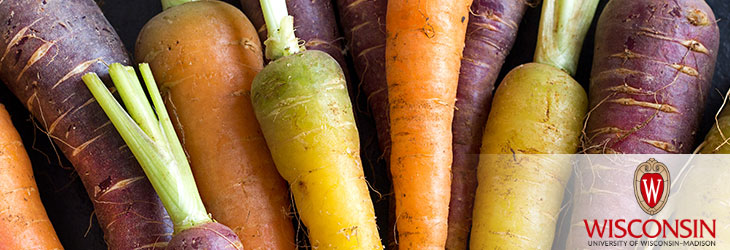Animals, Agriculture & Food

Predicting the Nutritional Quality of Corn Silage by Near Infrared Reflectance Spectrophotometry Equations
WARF: P01304US
Inventors: James Coors, Joseph Lauer, Patrick Flannery
The Wisconsin Alumni Research Foundation (WARF) is seeking commercial partners interested in developing software that rapidly estimates the nutritive value of corn silage using near infrared scanning.
Overview
Corn silage, the moist fermented fodder that employs the whole plant, has many uses in agriculture including feed for cud-chewing ruminants like cattle and sheep. Assessing silage’s nourishing content, including crude protein and fiber, is critical to the development of new corn varieties by seed companies.
The process, however, is expensive and time-consuming when conducted by traditional wet lab analysis. A new method that does not require laborious sample preparation and that provides immediate evaluation is essential.
The process, however, is expensive and time-consuming when conducted by traditional wet lab analysis. A new method that does not require laborious sample preparation and that provides immediate evaluation is essential.
The Invention
UW–Madison researchers have developed prediction equations that can estimate corn silage nutrition based on the unique light patterns of different chemical components using near-infrared reflectance spectrophotometry (NIRS).
The NIRS equations are calibrated on data obtained by traditional wet lab analyses of silage from the northern Corn Belt. Values of acid detergent fiber (ADF), neutral detergent fiber (NDF), in vitro true digestibility (IVTD) and crude protein serve as base parameters to assess all subsequent NIRS scans of dried ground samples.
The NIRS equations are calibrated on data obtained by traditional wet lab analyses of silage from the northern Corn Belt. Values of acid detergent fiber (ADF), neutral detergent fiber (NDF), in vitro true digestibility (IVTD) and crude protein serve as base parameters to assess all subsequent NIRS scans of dried ground samples.
Applications
- Corn variety trials conducted by hybrid seed companies
- Preliminary evaluations of new corn inbreds and hybrids
- Use by commercial laboratories not currently incorporating NIRS equations
Key Benefits
- Quick, reliable estimations
-
No expensive or time-consuming analysis